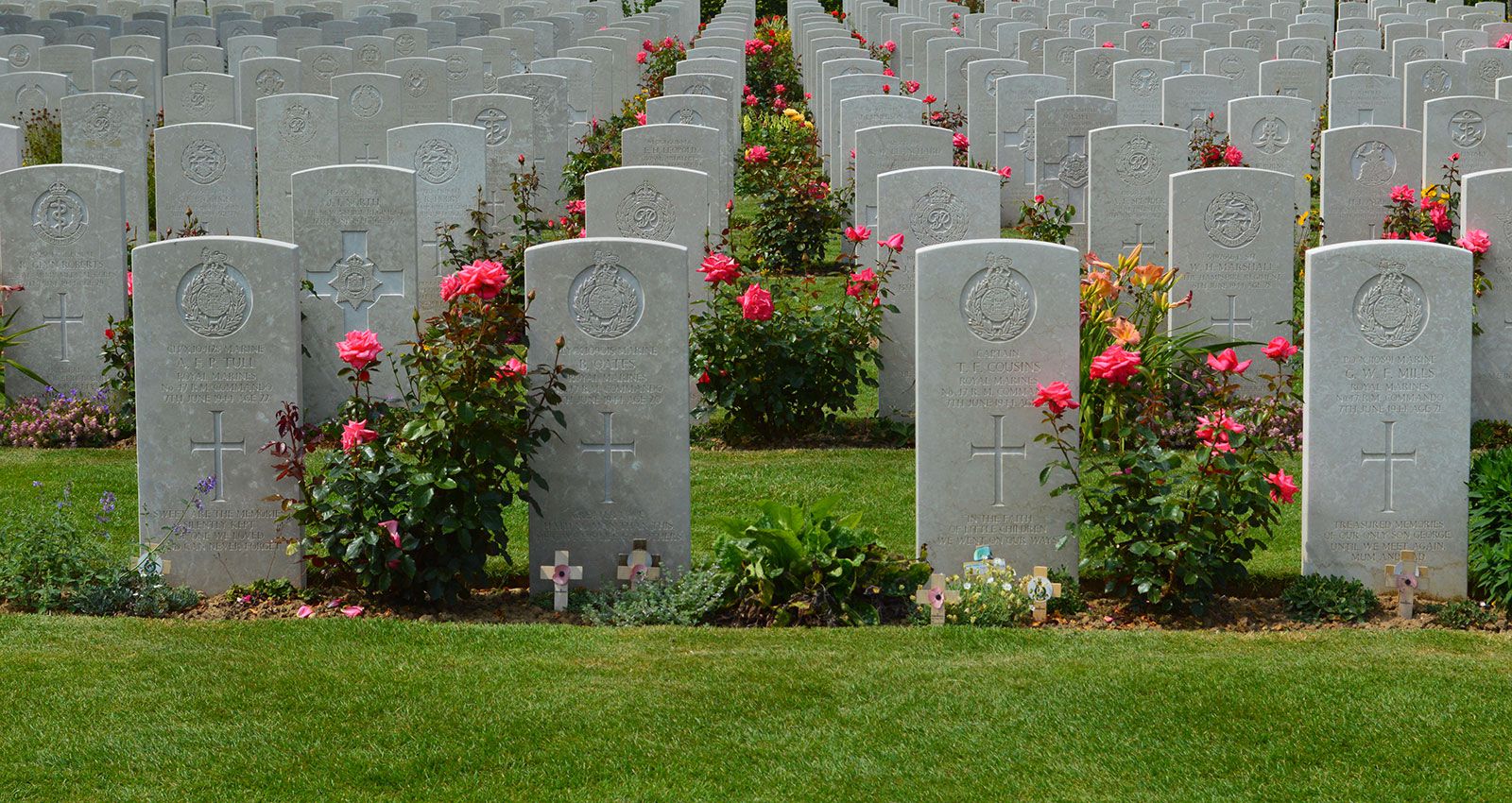World War One
centenary visits
Full Excursion Guide document available in your MyPGL account.
Half-day excursions
Choose one of the following half-day excursions, or combine them and include a town trail for a full day out. Our Tour Organisers will advise you or you can refer to our sample itineraries for primary schools and for secondary schools.
Etaples: The Commonwealth Forces Military Cemetery
The War Memorial in Etaples stands on the site of the military hospitals which were built during the First World War. It was officially opened on May 14, 1922 by King George V. Over 10,000 soldiers are buried here.
Arras: Les Boves and Wellington Quarry
The town of Arras was destroyed in 1914, but beneath its streets, the impressive chalk quarries (boves), which were first excavated in the Middle Ages, played a crucial role in the battle to come. In November 1916, the Allies had the ingenious idea of expanding these caverns and tunnels in order to allow troops to be conveyed safely and in secret to the front. An underground network was created which accommodated up to 24,000 soldiers, along with a medical centre with a fully equipped operating theatre. The tunnels can be visited from the Tourist Office during opening hours.
The Wellington Quarry, named by the New Zealanders who dug it, has been designed as a remembrance site and museum. Above ground there is a memorial garden and a memorial wall to the British Army soldiers who were involved in the Battle of Arras. In a guided tour of the tunnels, groups are supplied with hard hats in the style of soldiers’ helmets.
Montreuil-sur-Mer: General HQ of the British Expeditionary Force (BEF)
The heroism of the soldiers in the trenches is the stuff of legend, but less well known is the huge ‘back office’ operation that gave vital support to the troops in the field. In 1916 the BEF’s General Headquarters was moved to Montreuil-sur‐Mer where it housed some 2,000 officers and men. There is an exhibition in the old citadel which shows how the final outcome of the war depended on the ‘back office’ as well as the courage and weaponry of the troops it supported.
The museum also runs workshops where groups can make a radio or learn how to use Morse code. A photography workshop shows how WWI was a turning point in relation to mass media in war; pupils get to take and keep a photograph made by a replica WWI camera.
Vimy Ridge Memorial
Vimy Ridge is one of the best places to visit to get a real understanding of trench warfare. Also known as Hill 145, Vimy Ridge was the site of some of the fiercest trench warfare of World War I. Of all the WWI battlefields, this is the best place to imagine how it must have felt to be part of a battle. Near the information centre, trenches wind through the earth which is still heavily pitted by shells and the churned-up land has been preserved, in part, as it was during the conflict.
Free guided tours of the trenches are run by friendly, bilingual Canadian students. An exhibition in the visitor centre illustrates the well-planned Canadian attack.
The Somme
Monuments, battlefields and cemeteries from both World Wars litter the regions of Picardy, Artois and Flanders, but nowhere are they as intensely concentrated as in the region north east of Amiens, between Albert and the market town of Arras. It was here, among the fields and villages of the Department of the Somme, that the main battle lines of World War I were drawn and one of the largest battles of the war took place, between 1 July and 18 November 1916, in which over a million men were killed or wounded.
- Newfoundland Park - A large Canadian memorial to the men of the Newfoundland Regiment (part of the 29th British Division) who died on the first day of the Battle of the Somme.
- Thiepval Memorial and visitor centre - Designed by Sir Edwin Lutyens, Thiepval is the largest British battle memorial in the world and commemorates the British and South African troops who died on the Somme but have no known graves. Some 72,000 names are listed on the stonework in addition to those who remain nameless.
- Ulster Tower - The Ulster tower is a memorial to members of the 36th Ulster Division who died on the first day of the Battle of the Somme. The 36th Division is famous for capturing the Schwaben Redoubt, which was a German stronghold. Entrance is free. On site there is a small café, a shop, and toilets.
- Lochnagar Crater - The Lochnagar Crater, located south of the village of La Boisselle, was created when 24 tons of explosives were detonated under German trenches on July 1, 1916. It is said, the explosion was so loud that the Prime Minister, David Lloyd George, felt his desk vibrate...in London! The crater is now a garden of remembrance.
For details of more visits, please refer to our excursion booklets or contact our experienced tour organisers.
For more information about the First World War, free resources are available from the Commonwealth War Graves Commission (CWGC). Also visit www.somme-battlefields.com
 MyPGL
MyPGL 0333 321 2116
0333 321 2116





